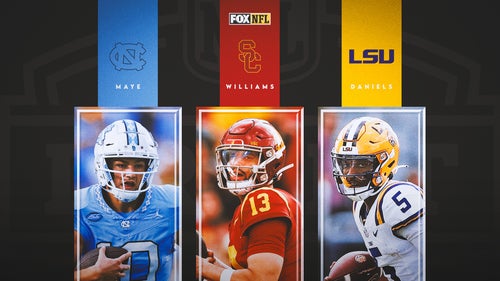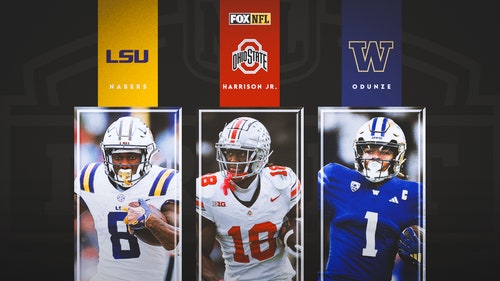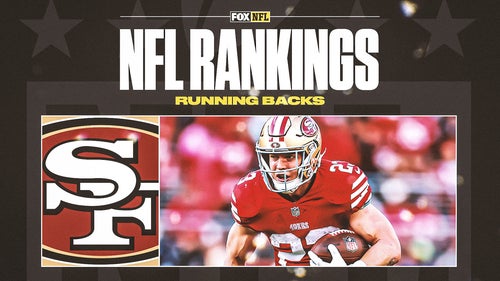
Cleveland Browns run game returns in read-option
Oct 23, 2016; Cincinnati, OH, USA; Cleveland Browns quarterback Kevin Hogan (8) looks to pass against the Cincinnati Bengals in the first half at Paul Brown Stadium. Mandatory Credit: Aaron Doster-USA TODAY Sports
The Cleveland Browns’ running game had disappeared over the past two weeks. However against the Bengals, the read-option opened running lanes for the Browns.
The Cleveland Browns’ running game showed signs of life in the 31-17 loss to the Cincinnati Bengals. For the two weeks prior to playing the Bengals, the Browns running game had been stopped.
Teams decided to stuff the box and make Cody Kessler defeat them by throwing the ball. The strategy was effective for opposing teams in so far as Kessler is a rookie and the only true threat at receiver is Terrelle Pryor. Teams double-teamed Pryor, blitzed Kessler and forced the Browns to use players such as Ricardo Louis and Rashard Higgins to beat them. Forcing three rookies to beat you is usually an effective strategy.
This strategy was also effective in stopping the (then) league’s leading rushing attack. The Browns went from first in the league rushing to eleventh in two weeks.
Now the running game seems to have gotten back on track. Kevin Hogan rushed for 104 yards on seven attempts and one touchdown. More importantly, Isaiah Crowell rushed twelve times for 63 yards for a 5.3 yards per carry average and one touchdown. Although Hogan’s numbers seem more impressive, it is Crowell’s numbers that are significant.
Crowell’s numbers returned to their normal levels. In games the Browns have effectively ran the ball, Crowell averaged between five and six yards per carry. He ran the ball roughly 12 to 18 times. Sunday’s performance was a return to the normal for him.
Which begs the question, how did the Browns resurrect their running game? Simple, they incorporated the read-option to beat the eight-man box.
Sep 20, 2015; Pittsburgh, PA, USA; San Francisco 49ers quarterback Colin Kaepernick (7) is sacked by Pittsburgh Steelers linebackers Bud Dupree (48) and James Harrison (92) during the fourth quarter at Heinz Field. The Steelers won 43-18. Mandatory Credit: Charles LeClaire-USA TODAY Sports
The purpose of the Read-Option
Contrary to popular belief, the point of the read-option is to open holes for the running back. When teams effectively run the ball, opponents will stack the box and aggressively play the run. The read-option is designed to slow down the backside chaser and give the offensive line a numbers advantage at the point of attack.
The read-option is a wrinkle off the zone run scheme. The zone run scheme attempts to have lineman block defenders one gap over toward the point of attack. This is accomplished by the lineman taking read steps to gain position on the defender next to them closest to the point of attack. Ideally this would result in a double-team leading to a block on a linebacker. If effective, it should open holes for the running backs.
The challenge for a zone scheme is how to block the backside defensive end. If the end begins to chase the running back down the line of scrimmage, the play is easily broken up. Offenses had to figure out how to contain the backside chaser.
There are several ways to neutralize the backside chaser. Play-action roll out passes are designed to put the defensive end in a bind. Zone schemes, like that of the Mike Shanahan, do this effectively. One wrinkle to control the backside chaser is to option him.
The read option is designed to put the backside defensive end in a bind. Where the ball ultimately goes is dependent upon the defensive end’s actions. If he chases, the quarterback keeps. If he stays home, the running back gets the ball.
The point of the read-option is to open up the zone scheme for the running back. By forcing the defensive end to stay home with the threat of the quarterback run, the read-option is opening the zone running game up for the running back. If the lineman can get their blocks, a team can effectively run against an eight-man front.
No respectable coach wants to see their irreplaceable quarterback running down the field with the ball. They want him throwing passes and making handoffs. However, the threat of a quarterback run opens up the zone running game.
It is the threat of the quarterback run in the read-option that makes it effective. However, to ensure that it is a threat, the quarterback will have to actually run the ball two or three times effectively.
Sep 28, 2014; Santa Clara, CA, USA; San Francisco 49ers head coach Jim Harbaugh watches the scoreboard from the sideline during the fourth quarter against the Philadelphia Eagles at Levi
How the Harbaugh Brothers Killed the Read-Option
Before getting into exactly how the Browns fixed their running game with the read-option, it will be useful to review the history of the read-option in the NFL. This is important because Hue Jackson’s usage of the read-option is the next development in its viability as a scheme in the NFL.
The read-option make its mark in the 2012-2013 season/playoffs with Colin Kaepernick and the San Francisco 49ers. The then Jim Harbaugh-led 49ers incorporated the read-option as a way of taking advantage of Kaepernick’s speed and running ability. It was also used to mask Kaepernick’s poor accuracy in the passing game.
The 49ers were a run heavy team who found opponents stacking the box in order to stop the run. Harbaugh decided to open up the running game by incorporating the then little known read-option. Kaepernick had experience running the read-option out of the Pistol formation during his time at the University of Nevada, Reno. Under coach Chris Ault, who invented the Pistol offense, Kaepernick learned the nuances necessary to make the read-option work.
Needing an answer to opponents stuffing the box, Harbaugh decided to take a page out of Chris Ault’s playbook. The wrinkle in the offense was effective. The 49ers made the Super Bowl losing to John Harbaugh’s Baltimore Ravens.
As is usually the case when the Ravens are involved, a football innovation that creates an advantage for an opposing team gets neutralized by the rules committee in the offseason.
The read-option put the NFL rules in a bind. On the one hand, the option game is designed to create confusion as to who has the ball. By making the decision based on defensive reaction, the offense is able to take away their aggression. On the other hand, the emphasis upon protecting the quarterback unwittingly helped the offense. Defenses were not allowed to hit the quarterback unless it was absolutely clear he was a part of the play and only then it was a limited amount of contact. This rule provided further indecision on the defense. Who would risk a personal foul by hitting a QB who faked them out and did not have the ball?
The Ravens’ contingency correctly argued that the emphasis on quarterback safety handcuffed defenses trying to stop the read-option. As a result, the NFL declared that quarterbacks running the read-option will be treated as a runner.
“He is still treated as a runner until he is clearly out of the play,” NFL VP of Officiating Dean Blandino said in a 2013 article on Pro Football Talk. “The quarterback makes the pitch, he’s still a runner — he can be hit like a runner until he’s clearly out of the play.”
In a stunning reversal of emphasis, the NFL ruled that when running a read-option, the quarterback must clearly take himself out of the play. If not clearly out of the play, the quarterback would be treated the same as a running back taking a fake. That is, it is now open season on quarterbacks running the read-option. The hunters are many.
Of course Jim Harbaugh claimed these new rules were biased and flawed. “By definition, a fake is a deception,” Harbaugh said, continuing to voice his concern. “It is a deception, deceptive maneuver. . . . Now are they opened up to being hit in the head and the knees, treated like a running back? It seems like they would have more of an appetite to look at that, and they’ve said they don’t have an appetite to look at it any further.”
Nevertheless, the sibling rivalry of the Harbaugh brothers lead the death of the read-option in the NFL. No sane coach would open a $20 million quarterback to hits that the league otherwise protects them from. With that logic, RIP read-option.
Oct 9, 2016; Cleveland, OH, USA; Cleveland Browns head coach Hue Jackson watches game action during the second half at FirstEnergy Stadium. Mandatory Credit: Ken Blaze-USA TODAY Sports
Hue Jackson’s use of the Read Option
The following may sound brutal because it probably is. Hue Jackson has found a way to incorporate the read-option into his offense without getting his quarterback hurt.
How? By running the read-option with someone other than his quarterback. Why put the quarterback in harm’s way when you can put a receiver or backup quarterback in harm’s way?
Much has been made of the number of quarterbacks have been used by the Browns over the season. The assumption is that these quarterbacks are being used because of injury. But injury is only half the reason.
The number of quarterbacks used is high because, in addition to the injuries, Hue Jackson is using them to run the read-option. Think about it, when Terrelle Pryor came into the game as a quarterback against the Miami Dolphins he immediately ran the read-option. He then progressed to run-pass options. His fully loaded playbook included read-option, RPO’s and roll out passes. All of those plays are designed to put pressure on the backside defensive end, thereby opening the running game for the running backs.
Kevin Hogan came into the game on Sunday against the Bengals. His offensive playbook looked similar to Pryor’s before the injury to Cody Kessler. He basically ran read-options and RPO’s. After Kessler’s injury, Hogan was forced to take on the role of quarterback which severely limited his effectiveness.
Jackson has integrated elements of the read-option into his offense by using someone else as a threat in the run game who can also throw the ball. Teams can focus in on a read-option only player. But by using a player who can throw the ball as well, it is opening up the run game simply on the basis of the threat of a run or pass by the quarterback.
So far, this sub-package in Jackson’s offense is effectively getting the offensive line and the running backs the holes they need in the running game. Sometimes the threat of the read-option is better than the option itself.
More from Dawg Pound Daily
This article originally appeared on















































































































































